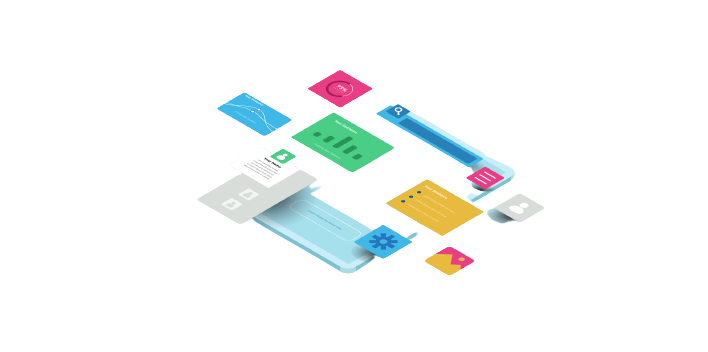In the world of design, user experience (UX) is king. The success of a product or service is largely dependent on how users interact with it. To create a positive user experience, designers must prioritize consistency across all touchpoints.
In the world of design, user experience (UX) is king. The success of a product or service is largely dependent on how users interact with it. To create a positive user experience, designers must prioritize consistency across all touchpoints. One way to achieve this consistency is through the use of design systems. In this blog post, we will explore the importance of a design system for creating consistent user experiences.
What is a Design System?
A design system is a collection of components, guidelines, and standards that define the visual language and behavior of a product. It is a set of rules and guidelines that designers, developers, and other stakeholders can follow to ensure a consistent user experience across all touchpoints.

Design systems typically include components such as color palettes, typography, icons, buttons, form fields, and other interface elements. They also include guidelines for how these components should be used and combined to create a cohesive visual language.
The Benefits of Design Systems
There are several benefits of using design systems for creating consistent user experiences:
-
Consistency
Design systems ensure that all touchpoints of a product or service have a consistent look and feel. This helps users to feel more comfortable and familiar with the product, leading to improved usability and increased engagement.
-
Efficiency
With a design system in place, designers and developers don’t have to reinvent the wheel each time they create a new component or interface element. This saves time and effort and ensures that all components are created to the same standards.
-
Scalability
As products and services evolve, design systems can be updated to reflect changes in the visual language or functionality of the product. This makes it easier to scale the product or service without sacrificing consistency.
-
Collaboration
Design systems provide a shared language for designers, developers, and other stakeholders to work with. This promotes collaboration and helps to ensure that everyone is working towards the same goals.
-
Brand Identity
Design systems ensure that all touchpoints of a product or service are aligned with the brand identity. This helps to reinforce brand recognition and build brand loyalty.
Creating a Design System
Creating a design system is a complex process that requires collaboration between designers, developers, and other stakeholders. Here are some key steps in the process:
-
Define the scope and purpose of the design system
Before starting the design system, it’s important to define the scope and purpose of the system. This will help to ensure that everyone is on the same page and working towards the same goals.
-
Create a visual language of the design system
The visual language is the foundation of the design system. It includes the color palette, typography, and other visual elements that define the product’s look and feel.
-
Develop guidelines for the design system
Guidelines provide instructions on how to use the visual language and components to create consistent interfaces. Guidelines should cover topics such as color usage, typography, layout, and spacing.
-
Create a component library of the design system
The component library is a collection of interface elements that can combine to create screens and interfaces. Components should be designed to be flexible and reusable.
-
Test and iterate
Once the design system is in place, it’s important to test it and iterate based on feedback from users and stakeholders. This helps to ensure that the design systems are meeting its goals and are effective in creating consistent user experiences.
Design System Examples
Some examples of successful design systems include Google’s Material Design, Salesforce’s Lightning Design Systems, and Shopify’s Polaris. These design systems have adopted by large companies and have helped to create consistent user experiences across a range of products and services.
Conclusion
Design systems have become an essential tool for creating consistent and cohesive user experiences across various digital products. By establishing a shared language and set of guidelines, design systems can help teams save time and resources, increase efficiency, and improve collaboration. With the growing need for scalable and consistent digital products, design systems are becoming standard practice in the industry. Investing in the development of design systems can have long-term benefits for your team, your users, and your organization.
BACK










